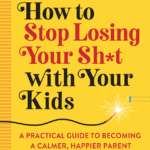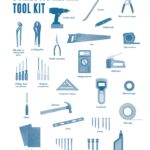 Q & A with Sophie Blackall, author of MISSED CONNECTIONS: Love, Lost & Found
Q & A with Sophie Blackall, author of MISSED CONNECTIONS: Love, Lost & Found
Q: How do you choose which Missed Connections listings to illustrate?
A: I glean Missed Connections a few times a week, and it’s all about the subject line. I look for the lyrical, “Billowy Red Scarf Girl,” or the funny, “Hipster Chick Who Passed Gas” (pages 54–55), the unintentionally funny, “Looking for the Hot Girl in the Pink Dress,” ones that immediately suggest images, “Furry Arms in Morning Lecture” (pages 74–75), or the plain odd, “Seeking Girl Who Bit Me TWICE” (pages 112–113). I look for ambiguous messages to illustrate. I like some detail but not too much detail. I dismiss posts where one or other of the couple was wearing anything named by brand, or, you know, baseball caps or sweat pants, because I don’t like drawing them. On the other hand, I’m drawn to top hats, and spats, and moustaches. I haven’t read a Missed Connection yet with someone wearing a monocle but, rest assured, I’ll snap it up if I do.
After I’ve harvested a bunch of messages, I let them settle and see which images float to the surface. By the time I sit down to draw, the picture is almost fully formed in my head. The original messages seem, for the most part, brief and spontaneous and uninhibited and I want my drawings to mirror that…they shouldn’t feel labored.
Q: Have you ever been in touch with any of the people you have painted?
A: Yes! A couple of times. The woman with “Long Curly Brown Hair on the Q” (pages 24–25) saw my illustration and wrote to me, as did the “Floral Print Jacket on the L” (pages 36–37). The fellow who wrote the post about sharing a bear suit with a girl at a party (pages 20–21) e-mailed me, which was kind of thrilling. He sent a photo taken that night, and that was a dreamlike experience. But even though I’ve now seen the “real” bear suit, my image of it feels real to me, and his photo the interpretation. There’s arrogance for you!
Many people wrote claiming the girl with the “Scrabble Tattoo on Roof” (pages 96–97) was their dear friend and, fairly recently, one of those friends reconstructed and photographed the scene, based on my version of it, which was incredibly surreal.
This scene was also reconstructed in a Radar short film about my project.
So now there are four versions of this moment in time in existence: the real one, my painting, the film made with actors, and the photograph based on the painting with the real people from the original event. It’s hard to wrap my head around.
Q: Based on your observations, what type of people do you think post Missed Connections ads?
A: I haven’t done a scientific analysis of this by any means, but Missed Connections are popular with straight and gay men and women, mostly between 20 and 35. Men posting Missed Connections seem to outnumber women posting, roughly 70 to 30. Occasionally, older people post, often looking for old flames and lost loves. Most messages express the writer’s personal regret at not being bolder and for missing an opportunity. They’re written as a shot in the dark, a small missive filled with hope for a second chance. But many messages are just thanking a stranger for a kindness…I love those because I imagine everyone else reading them feels encouraged by these little examples of humanity and generosity and tenderness. There are also more than a few messages from lonely people wondering why they never find themselves described—I illustrated one, “How Come No-one Ever ‘Misses’ Me?” (pages 66–67). They kill me, those.
Q: Which illustrations in this book are your favorites and which, from your blog, do people seem to respond to the most?
A: “We Shared a Bear Suit” (pages 20–21) is a perennial favorite as is “Girl with the Golden Swan Bike” (pages 86–87) and “When I Put Your Coat Collar Up” (pages 114–115). There’s something especially romantic about that last one, but I think my all-time favorite is “We Shared a Bear Suit.” The two people in the image each have part of the bear; each is incomplete. They clearly belong together.
Q: Where do most Missed Connections seem to occur?
A: Missed Connections take place on street corners and elevators, in emergency rooms and dog runs, in line at the grocery store and at Laundromats. Basically everywhere human beings collide, but especially in places where we are forced to stay still a while. Waiting rooms and airport lounges and every form of public transport.
In New York City there are hundreds and hundreds of Missed Connections posted every day, and thousands more that go undocumented. A good many of these seem to happen on the subway, and a disproportionate number of those on the L train. Or perhaps the L train riders are just more likely to post and read Missed Connections. I once read a message which said, “I am going to change to the L train so I can have a Missed Connection too.”
Q: Missed Connections classifieds are abundant and widely followed, even by those who do not post them. Why do you think they are so popular?
A: Missed Connections are small glimpses into strangers’ lives. They are packed with mystery, pathos, beauty, and humor. I know it’s not a New York phenomenon, but somehow it seems the perfect product of this city— people seeking intimacy in a crowd. Sitting on the subway, I’m always wondering what’s going on inside people’s heads, and Missed Connections posts give me the opportunity to find out. There’s more than a little voyeurism going on. I’m sure other people are drawn to them for the same reasons, but I think on some subliminal level there’s a vague desire to recognize ourselves as the person “missed.” It’s nice to know that people are looking at each other so attentively and even tenderly, noticing and appreciating details. That we’re not just a swarm. I think most people find Missed Connections enormously hopeful and romantic.
Q: You moved to Brooklyn, New York, from Australia in 2000. Do you find that the popularity of Missed Connections classifieds and, perhaps, the accompanying cultural fixation with love at first sight is mostly an American thing or have you seen traces of it internationally?
A: I think it’s universal. There are Missed Connections equivalents in London newspapers and I have given interviews on the subject for Italian, Norwegian, Swedish, Brazilian, and Israeli magazines and newspapers, which would suggest the theme has global interest! And of course, the Missed Connection itself is not new. For centuries the lovelorn have carved messages in tree trunks and rolled letters into bottles and cast them out to sea.
Q: What has the experience of illustrating Missed Connections classifieds, and creating this book, taught you about the nature of love?
A: Love at first sight is almost entirely visual. In most cases we don’t even hear the other’s voice. I think there’s a lot to be said for this. We can fill in the blanks and create our own particular knight in shining armor. I’m not an idiot: In the long run, knowing someone intimately and caring for them deeply leaves love at first sight for dead. Clichéd as it is, it’s a wonderful thing to have someone you love bring you a cup of tea when you have a cold, or curl up with you to watch a film on a rainy night, or turn on the oven while you knead the dough. Some of us find that person early on; for the rest of us there’s the hope of a second chance. And that hope can linger a long, long time.
We have only one life, and we rush through it pretty quickly. We make choices and follow paths and we don’t linger too long at crossroads. Moments of intimacy with strangers are minor detours we rarely explore, but those moments make us feel alive, and human, and part of something greater than ourselves. They connect us to each other.
 MISSED CONNECTIONS: Love Lost & Found
MISSED CONNECTIONS: Love Lost & Found
October 2011
$13.95
Paperback Original
CONTACT:
Rebecca Carlisle, Senior Publicist
Workman Publishing
(212) 614-7596
rebecca@workman.com





No Comments